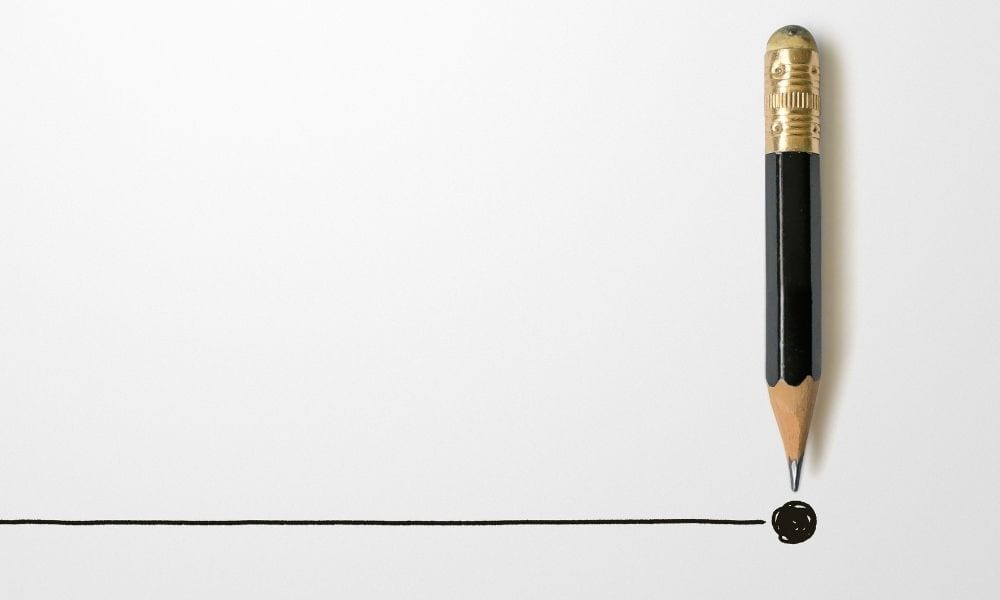

Those immediately recognizable yellow sticks with pink erasers are the modern versions of a writing implement first designed in the late 18th century.
The type of carbon inside the modern pencil, graphite, has been in use since the Aztecs used graphite as markers. Answers to the questions “Who invented the pencil and when was the first pencil made? ” give credit to several contributors.
Deposits of graphite were discovered in Bavaria in the early 15th century. In the mid-16th century, a deposit of pure graphite was found in Borrowdale, England.
Graphite was originally mistaken for a form of lead, and that has caused confusion ever since. We tend to refer to pencils as “lead pencils.” Early writers did use lead, but graphite became the preferred substance.
To use graphite to write, it requires a container because it is naturally both soft and brittle. The Borrowdale graphite was easily cut into sheets and then rods. Early pencils wrapped the graphite rods in string.
The English crown took over the Borrowdale mine and guarded it carefully, because graphite was used as a liner for molds that made cannonballs.
The British Crown was so protective of the substance that graphite mines were flooded to prevent plundering until the Crown needed more supply. Hence, graphite from England became a product for smugglers.
The first-ever mass production of pencils began in Germany in 1662. The product mixed graphite with sulfur and antimony.
During the Napoleonic wars, France was unable to import the German pencils, or graphite from England. Nicholas-Jacques Conte, who was a painter, inventor, and officer in Napoleon’s army, is credited with inventing the modern pencil. Conte found a way to mix graphite powder with clay, and he then fired it in a kiln to harden it.
Varying the composition of the mixture resulted in differences in the hardness of the resulting graphite rods. Conte figured out how to encase his graphite-clay rods within two wood cylinders, and patented his design in 1795. Conte’s design remains the basis for most wood pencils made today.
While both George Washington and Benjamin Franklin used imported pencils, pencilmaking began in America around 1812 when William Monroe of Concord, Massachusetts began making them.
The Joseph Dixon Crucible company was the largest consumer of graphite in 1870, and the company evolved into the Dixon-Ticonderoga pencil and art supplies company. German pencil companies established U.S. locations in New York and New Jersey in the late 1800s.
By the time pencils of modern design were being mass-produced, the Borrowdale graphite was long depleted. Most graphite is now imported from Sri Lanka, China, and other nations.
Hyman Lipman received a patent for adding an eraser to a pencil in 1858. The patent was later held invalid, when Lipman’s successor, Joseph Reckendorfer, who purchased the patent for $100,000, lost a lawsuit against Faber-Castell pencil company.
Pencils continued to evolve, resulting in the development of mechanical pencils. Today, pencil users debate with pen enthusiasts about which writing implement is better, though they do different jobs in different ways.
Modern aircraft achieve strength and efficiency with advanced metal alloys, such as titanium and aluminum,…
Learn about industries where FR clothing is necessary to ensure worker safety, comply with regulations,…
Home renovations are a commitment that requires thoughtful planning and execution. Discover the five factors…
An air conditioning breakdown in the middle of a scorching Indianapolis summer isn’t just inconvenient—it…
Discover the key advantages of hydroponic gardening, including higher yields, water efficiency, space-saving setups, and…
In the heart of the United States, particularly in Southwest Florida, the importance of commercial…